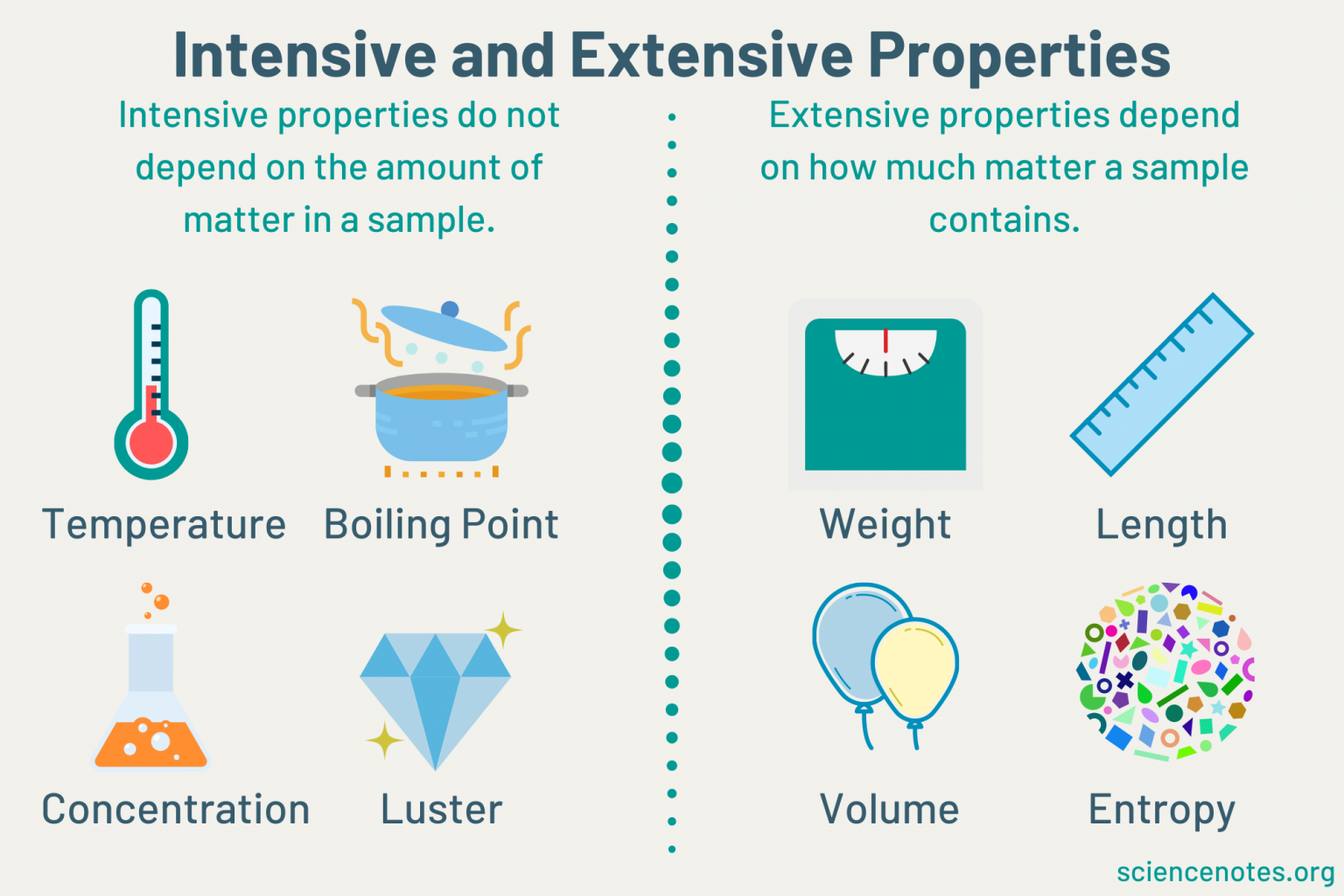Extensive and Intensive Properties Study Guide
INTRODUCTION
Nothing could be more soothing than a good brownie at the end of a long day. It can make you feel better, but if you’re hungry, just a brownie won’t help you, and you’ll be unable to appreciate its refreshing nature. However, while not as wonderful as pastry, a cake provides enough calories to satisfy your hunger. Similarly, some characteristics of matter are affected by sample size, whereas others are unaffected. Based on this, a matter’s qualities are divided into two categories: extensive and intensive properties.
INTENSIVE PROPERTIES
An intensive property of matter is a property of matter that is not affected by the size or amount of matter. Temperatures, density, color, melting and boiling points, and other intensive properties are unaffected by changes in the size or quantity of matter. Because it is an intensive property, the density of 1 liter of water or 2000 liters of water will stay constant. Because water’s electrical conductivity is constant regardless of volume, it shows whether electric conductivity is intensive or extensive.
EXTENSIVE PROPERTIES
There are properties of matter that depend on the quantity or dimension of the matter, such as length, mass, volume, weight, etc. These characteristics are known as extensive properties of matter, and their value varies as the dimension or quantity of the matter alters. A physical quantity whose value is comparable to the magnitude of the system it represents or the amount of matter in the system is known as an extensive property.
A gallon and a little bottle can both contain water. The difference between them is the amount of water they can hold. A gallon can carry around 1000 liters of water, whereas a bottle can hold only a liter. There is a relationship between these properties.
RELATIONSHIP BETWEEN INTENSIVE AND EXTENSIVE PROPERTIES
An intensive property is the ratio of any two extensive properties. The density of water, for instance, is the ratio of mass to volume (both extensive), but it is also intensive because it does not vary as the quantity of a substance shifts.
Density (intensive) = mass (extensive) / volume (extensive)
CONCLUSION:
- A characteristic dependent on the amount of substance in a sample is an extensive property.
- Extensive properties include mass length, for example.
- An intense property is a property of matter determined only by the type of matter present in a sample, not by its quantity.
- Intensive properties include density and resistivity, to name a few.
FAQs
1. Is conductivity an intensive property?
The electrical conductivity of a material is a quality that depends exclusively on the type of substance; therefore, conductivity is an intensive property.
2. Is electrical resistance an intensive or extensive property?
The constraint placed on the flow of charge is known as resistance. Because it is dependent on the length and area of the material, it is an intensive property.
We hope you enjoyed studying this lesson and learned something cool about the Extrinsic and Intrinsic Properties! Join our Discord community to get any questions you may have answered and to engage with other students just like you! Don’t forget to download our app to experience our fun VR classrooms – we promise it makes studying much more fun! 😎
SOURCES:
- Extensive and Intensive Properties: https://www.ck12.org/c/chemistry/extensive-and-intensive-properties/lesson/Extensive-and-Intensive-Properties-CHEM/. Accessed 24 Feb 2022.
- Intensive and Extensive Properties: https://brilliant.org/wiki/intensive-and-extensive-properties/. Accessed 24 Feb 2022.

